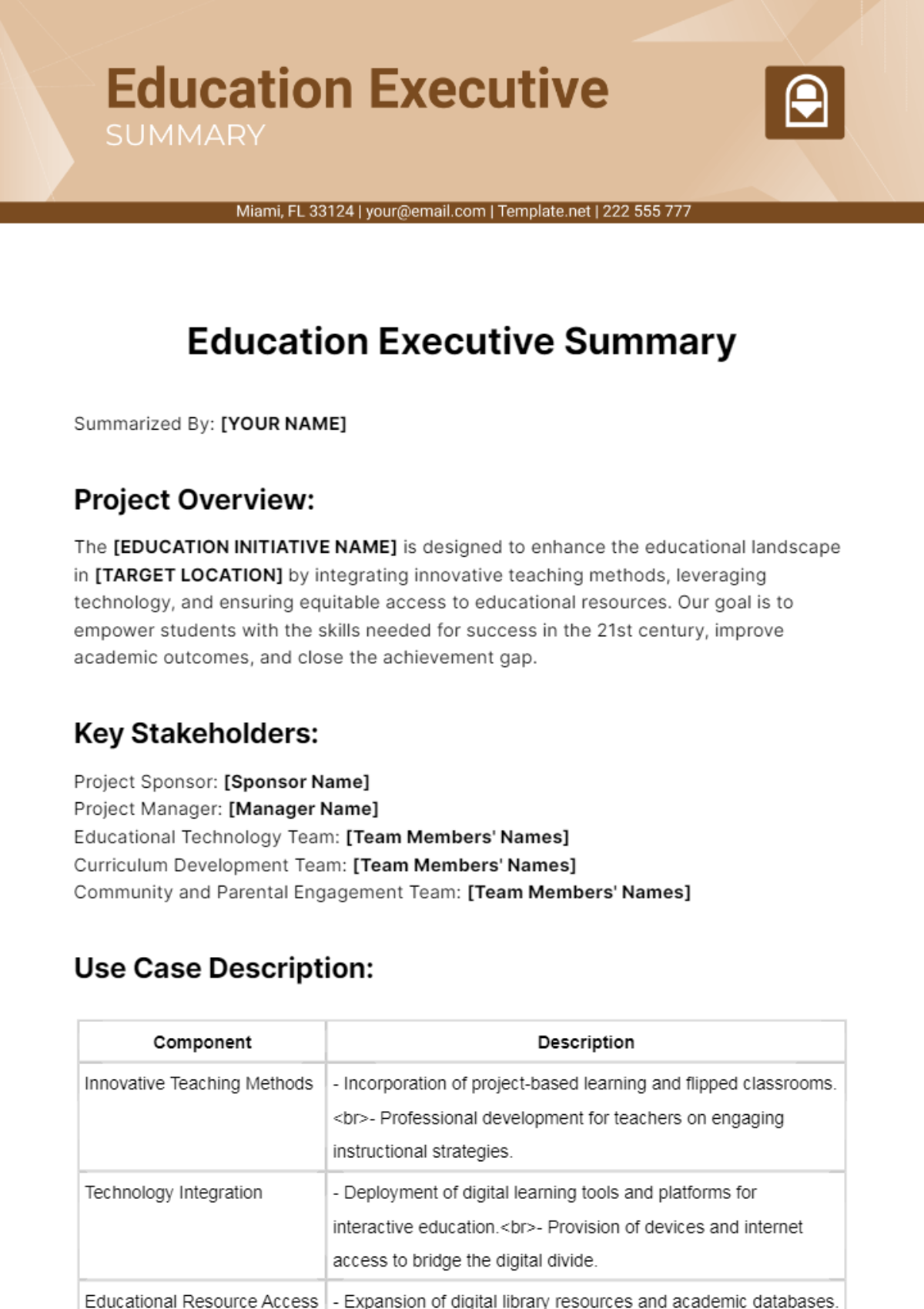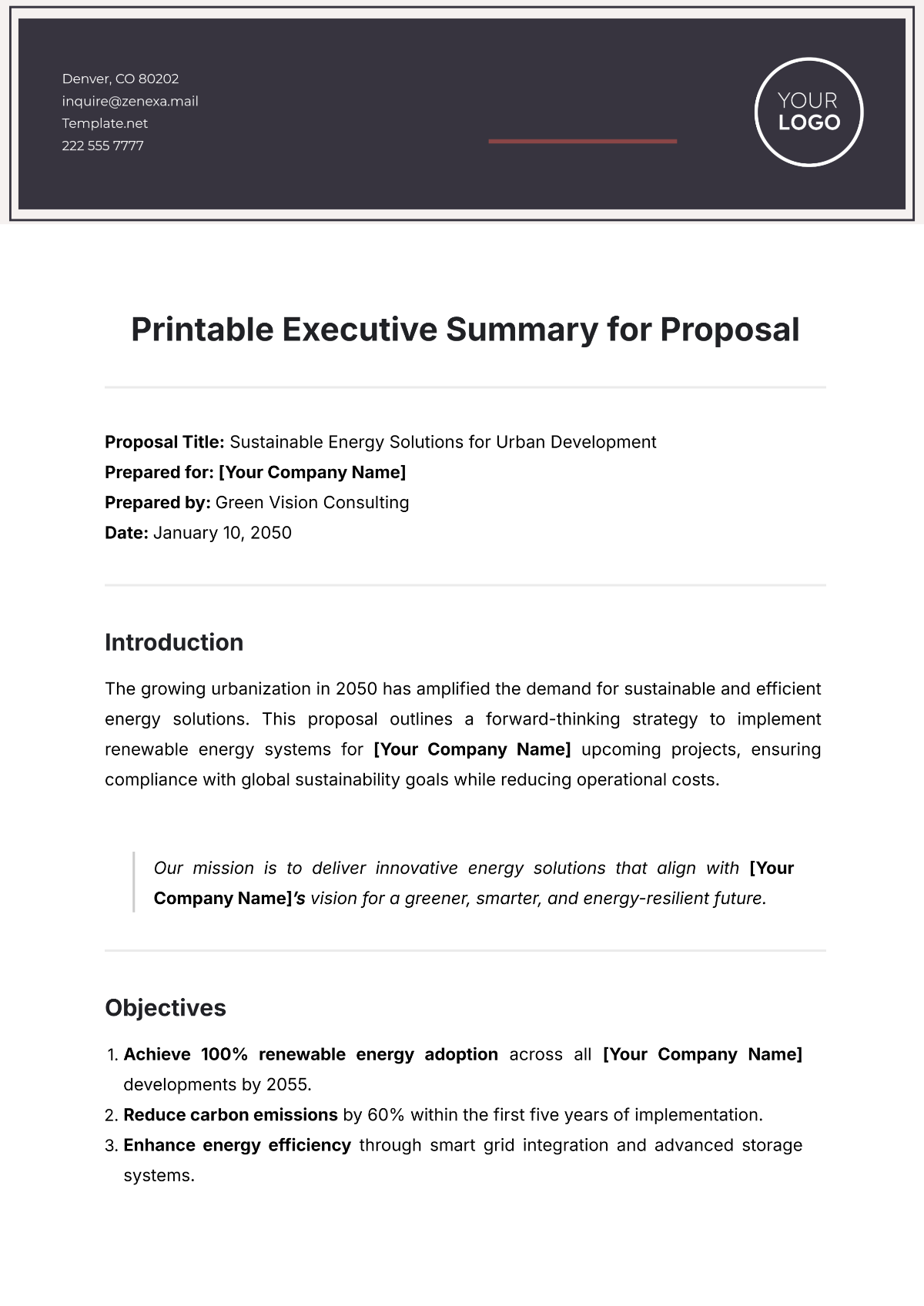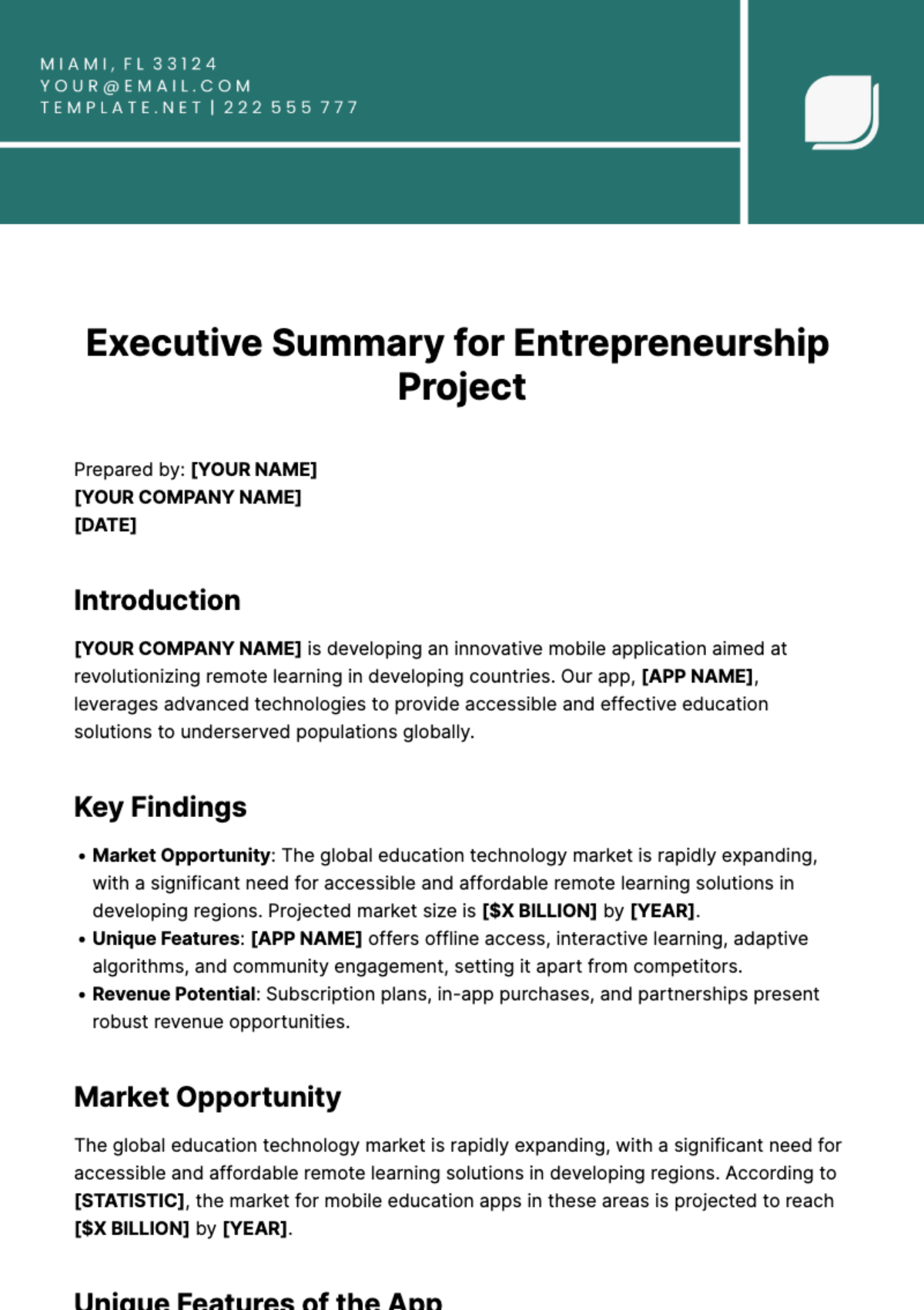Executive Summary Outline
Introduction
In this section, [YOUR NAME], an expert in [YOUR FIELD], provides a structured framework for creating an executive summary outline. The Executive Summary Outline serves as a roadmap for summarizing key points and highlighting essential information in a concise and effective manner.
This overview explores the crucial role of an executive summary in presenting core points from larger documents or reports for easy comprehension in a business context.
This refers to the detailed description and analysis of the structure and elements that make up the outline.
Document Overview
[YOUR NAME] presents a detailed overview of the document or report that the executive summary will summarize. This section outlines the main sections and key points to be covered in the executive summary.
Background Information
Brief overview of the document's context and purpose
Summary of the main topics or issues addressed in the document
Key Findings and Insights
Highlighting the most significant findings or insights revealed in the document
Identification of key trends, challenges, or opportunities
Executive Summary Structure
[YOUR NAME] outlines the recommended structure for the executive summary, ensuring that it effectively captures the essence of the document and provides valuable insights to the readers.
Introduction
Concise overview of the document's objectives and scope
Statement of the problem or issue addressed in the document
Summary of Findings
Succinct presentation of the main findings, conclusions, and recommendations
Emphasis on the most critical insights that decision-makers need to know
Conclusion and Next Steps
In this section, [YOUR NAME] concludes the executive summary outline and provides guidance on next steps for completing the executive summary.
Summary of the key takeaways from the document
Recommendations for further action or follow-up
Additional Considerations
In this section, [YOUR NAME] highlights additional factors to consider when creating the executive summary outline, ensuring its effectiveness and clarity.
Audience Analysis: Consider the needs and preferences of the target audience to tailor the executive summary accordingly.
Language and Tone: Use clear, concise language and a professional tone to convey the information effectively.
Formatting Guidelines: Follow formatting guidelines such as using bullet points, headings, and bold text to enhance readability.
Length and Structure: Ensure the executive summary is sufficiently brief while still capturing all essential information.
Review and Revision: Plan for review and revision to refine the executive summary outline and ensure accuracy and completeness.
Final Review and Approval
Before finalizing the executive summary outline, [YOUR NAME] recommends conducting a thorough review process to ensure accuracy, clarity, and alignment with the document's objectives.
Peer Review: Seek feedback from colleagues or subject matter experts to identify any potential gaps or areas for improvement.
Content Verification: Double-check all information to ensure it accurately reflects the content of the document.
Approval Process: Obtain approval from relevant stakeholders, such as project sponsors or department heads, before proceeding with the finalization of the executive summary outline.
Conclusion
In conclusion, [YOUR NAME] emphasizes the importance of creating a well-structured executive summary outline to effectively communicate the key points and insights of a document. By following the outlined guidelines and considerations, organizations can create executive summaries that are informative, concise, and impactful.
Summarized By: [YOUR NAME]

















































